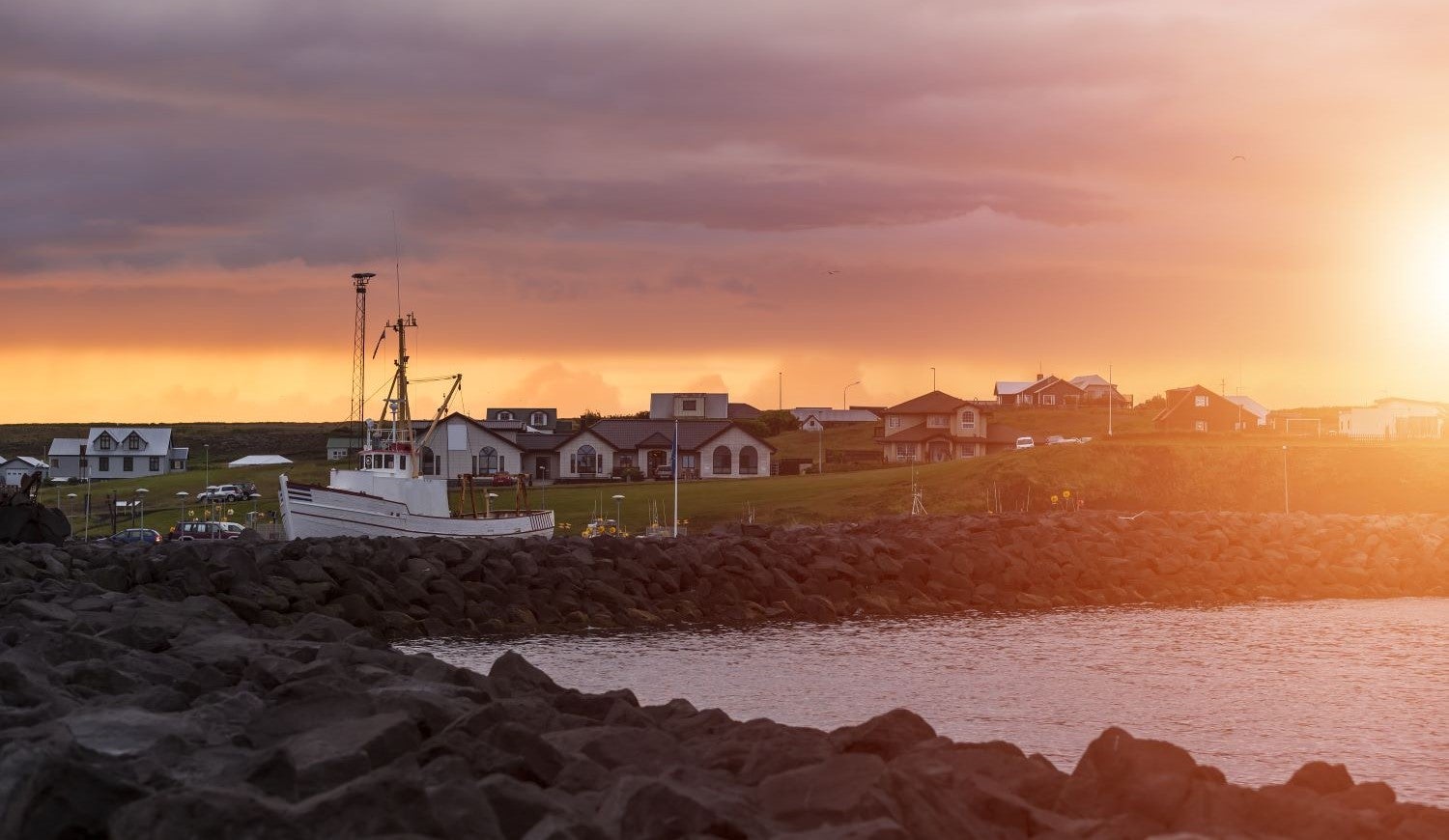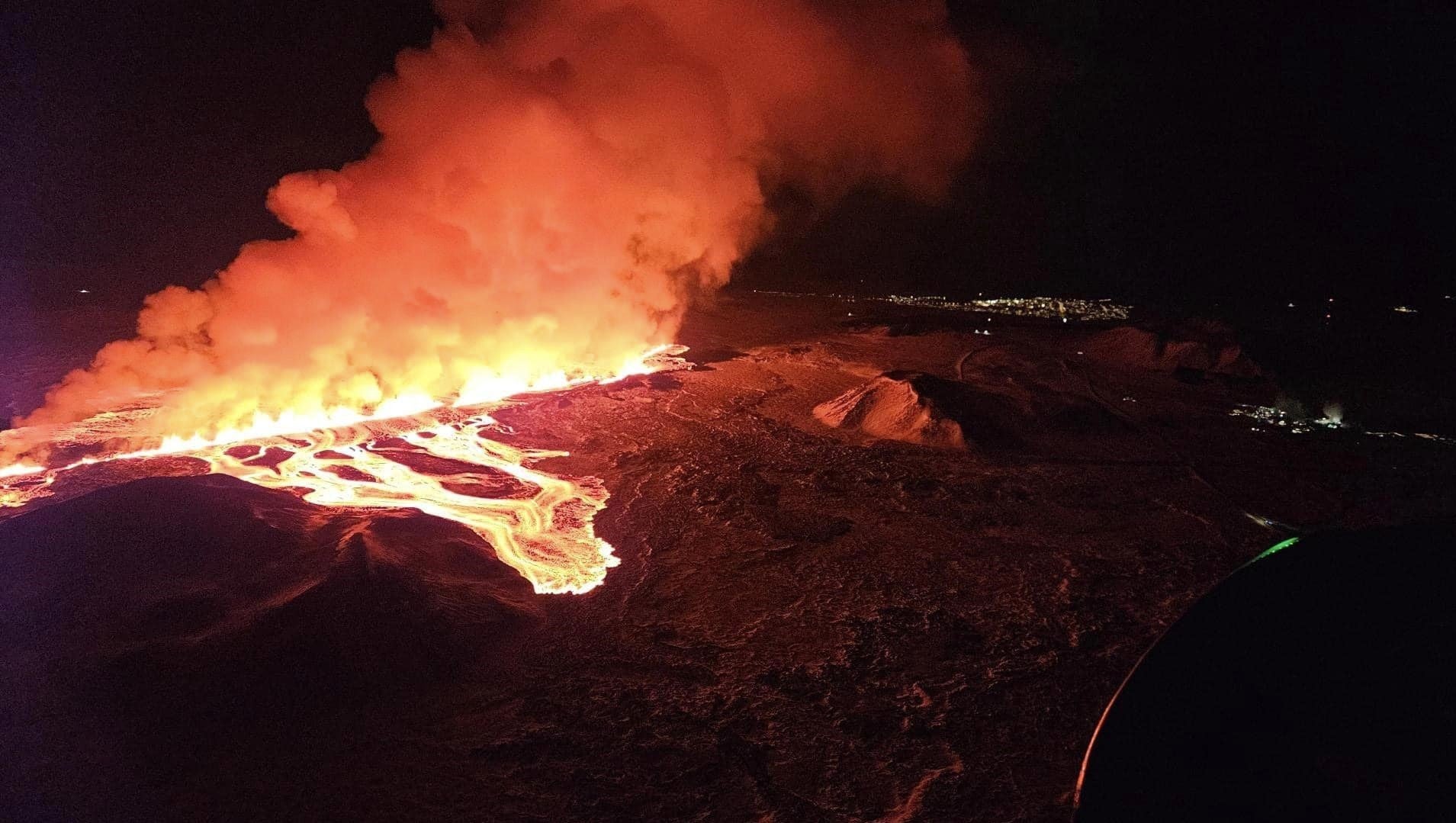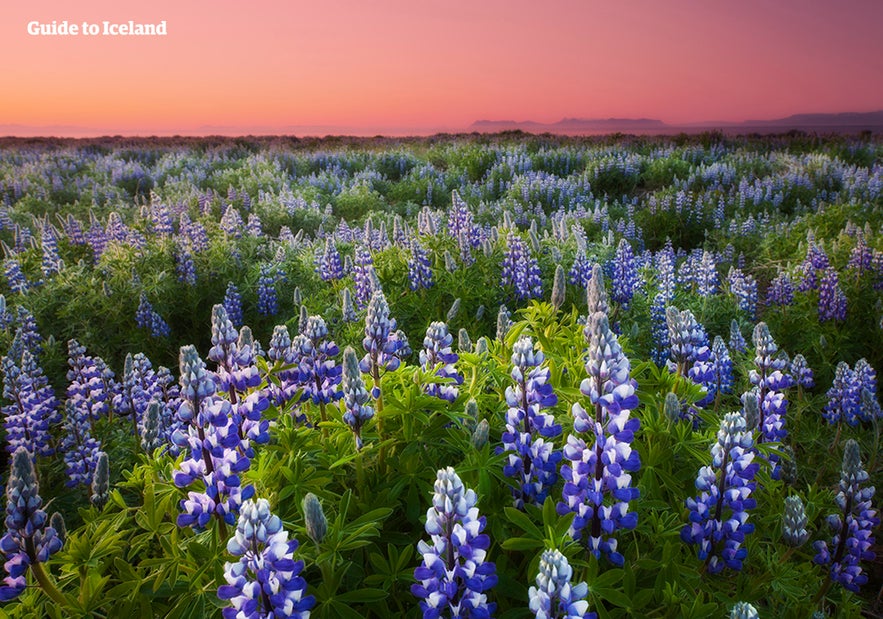
Iceland is a country of incredible natural beauty, and spring is one of the best times to experience it. From the northern lights to the migration of birds, spring in Iceland is a season of renewal, making it an ideal time for visitors to explore all that the country has to offer.
Spring in Iceland typically starts in March and lasts until May. As the winter months come to an end, Iceland begins to thaw out. The snow starts to melt, the ice begins to break up, and the days get longer. For many people, spring is the last chance to witness the northern lights before the long days of summer take over. These spectacular displays of light can still be seen until around mid-April, making it a perfect time for travelers to rent a car, go out in nature and experience this unique phenomenon.
Why You Can Trust Our Content
Guide to Iceland is the most trusted travel platform in Iceland, helping millions of visitors each year. All our content is written and reviewed by local experts who are deeply familiar with Iceland. You can count on us for accurate, up-to-date, and trustworthy travel advice.
Another highlight of spring in Iceland is the abundance of wildlife, as many species start to come out of hibernation and migrate back to the island. This includes birds such as puffins, who arrive in Iceland in April and May to breed, as well as seals and whales that can be spotted off the coast.
Spring in Iceland is also a great time for tours and outdoor activities such as hiking, horseback riding, and sightseeing. Many of the country's most famous sights, such as the Golden Circle and the Blue Lagoon, are open year-round and can be enjoyed in the spring without the summer crowds.
Overall, Iceland in spring is a magical time to visit, offering a unique combination of natural beauty, wildlife, and outdoor adventure. Read on to find out everything you need to know about Iceland in spring.
Things to Do in Iceland in Spring
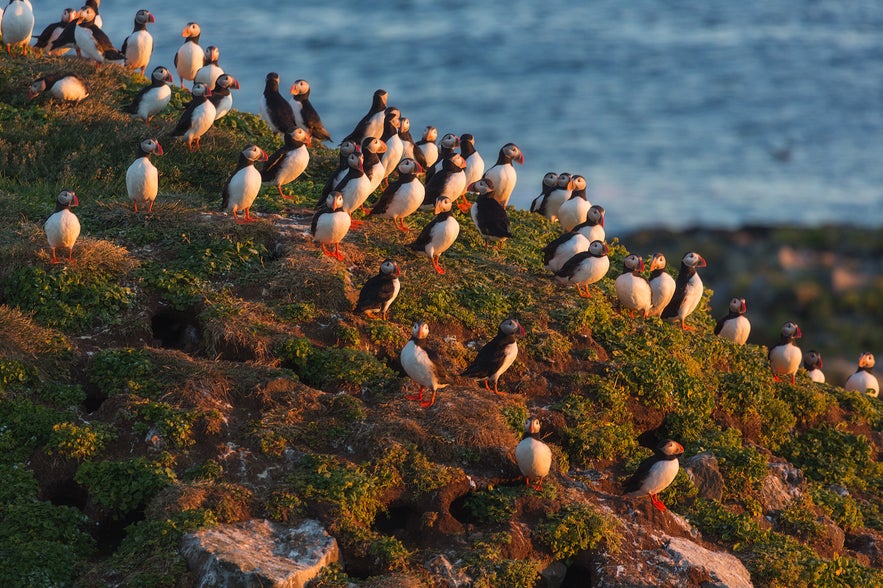 Iceland in spring is a wonderful time to visit, with milder temperatures and longer daylight hours than during the winter months. In March and April, you are also likely to see the northern lights. While in May you will be able to sail on the glacier lagoon and witness the midnight sun. Spring is also a great time to do a self-drive tour, as the driving conditions will have improved and daylight is longer.
Iceland in spring is a wonderful time to visit, with milder temperatures and longer daylight hours than during the winter months. In March and April, you are also likely to see the northern lights. While in May you will be able to sail on the glacier lagoon and witness the midnight sun. Spring is also a great time to do a self-drive tour, as the driving conditions will have improved and daylight is longer.
Explore the Golden Circle: The Golden Circle is a popular tourist route that includes several of Iceland's top attractions, such as the Geysir geothermal area, Gullfoss waterfall, and Thingvellir National Park. The route is easy to drive and can be done as a day trip from Reykjavik.
Go whale watching: Spring is a great time to spot whales in Iceland's coastal waters. Several tour operators offer whale-watching excursions from Reykjavik and other coastal towns, such as Husavik. In May, you might also spot puffins!
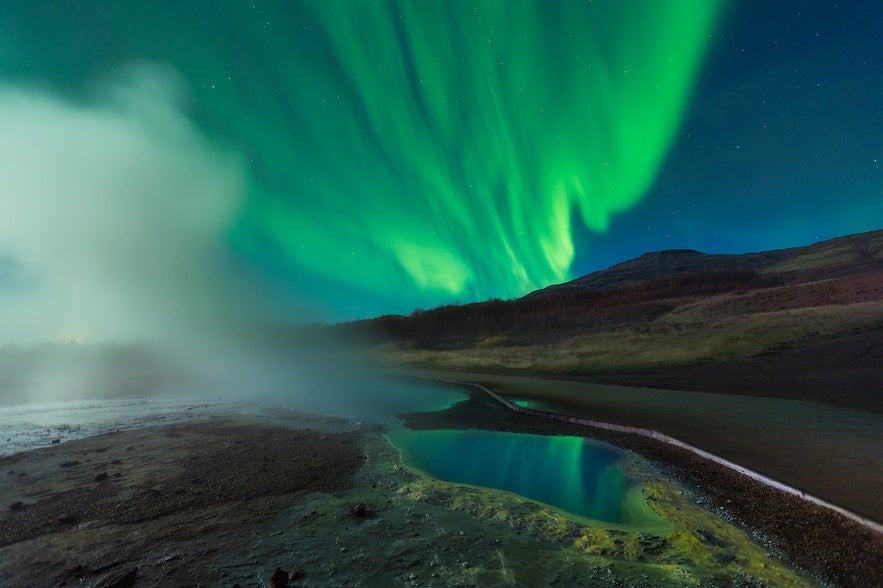 Relax in hot springs: Iceland is known for its natural hot springs, and spring can be a great time to visit them. Some of the most popular hot springs include the Blue Lagoon, Sky Lagoon, and Hvammsvik Hot Springs.
Relax in hot springs: Iceland is known for its natural hot springs, and spring can be a great time to visit them. Some of the most popular hot springs include the Blue Lagoon, Sky Lagoon, and Hvammsvik Hot Springs.
See the northern lights: While the best time to see the northern lights is in the winter months, it is still possible to see them in the spring. The key is to find a dark location away from the light pollution of cities and towns and to check the aurora forecast before heading out. If this is your main goal for your visit, you can also stay in northern lights hotels to increase your chances.
Overall, Iceland has plenty to offer in the spring, whether you're interested in nature, culture, or outdoor activities.
Three Reasons to Visit Iceland in Spring
There are a number of benefits to visiting Iceland during spring. These include:
1. Fewer Visitors
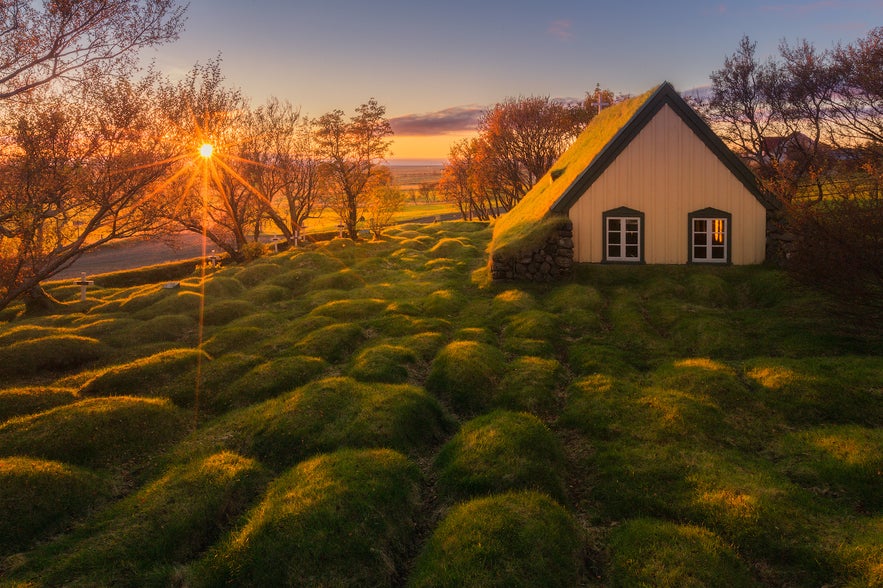 There are generally fewer people visiting Iceland in spring compared to the summer months. Spring is considered the shoulder season in Iceland, which means that there are fewer visitors than in the peak season of June, July, and August.
There are generally fewer people visiting Iceland in spring compared to the summer months. Spring is considered the shoulder season in Iceland, which means that there are fewer visitors than in the peak season of June, July, and August.
This can be an advantage for visitors to Iceland in spring, as it means that popular tourist sites and attractions are less crowded, and accommodation and tour prices may be lower than during the peak season.
It's still a good idea to book accommodation and tours in advance to ensure availability. Visitors to Iceland in spring can generally expect fewer crowds and a more relaxed atmosphere than during the summer months.
2. Prices Will Be More Affordable
 Traveling to Iceland in spring can be cheaper than traveling during the peak summer season. Accommodation and tour prices may be lower in the shoulder season, which runs from March to May, compared to the peak season of June to August.
Traveling to Iceland in spring can be cheaper than traveling during the peak summer season. Accommodation and tour prices may be lower in the shoulder season, which runs from March to May, compared to the peak season of June to August.
However, prices can still vary depending on the time of year, the specific accommodation and tour operators, and how far in advance you book. It's always a good idea to compare prices and book early to get the best deals.
Additionally, some airlines may offer cheaper flights during the off-peak season, which can help reduce the overall cost of a trip to Iceland in spring.
3. Perfect Light for Photography
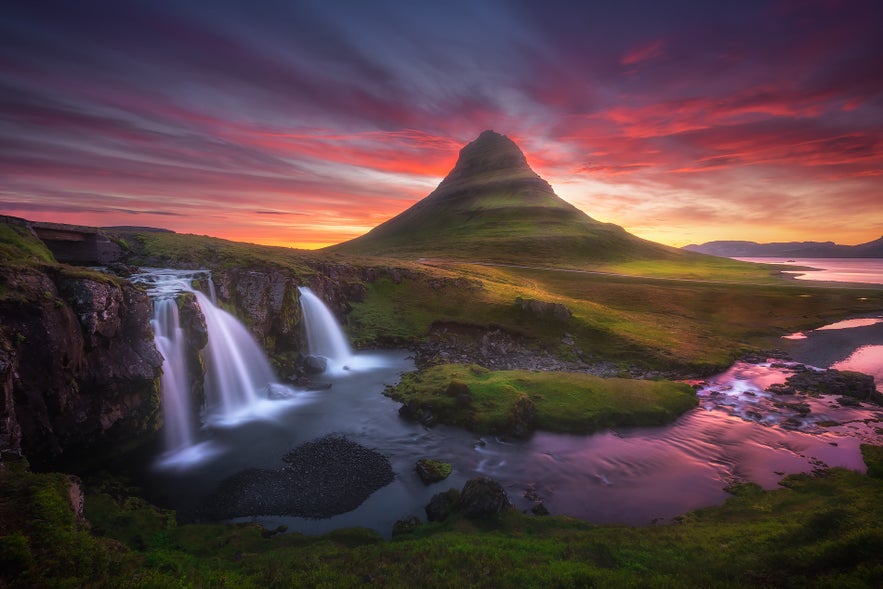
Additionally, the landscapes in Iceland are particularly stunning during spring, with the snow and ice starting to melt and the countryside coming to life with vibrant green colors. This can make for some truly breathtaking photography opportunities.
However, it's important to note that the weather in Iceland can be unpredictable, and it's always a good idea to come prepared with warm and waterproof clothing, as well as protective gear for your camera equipment. Check out this article to read more about photography in Iceland.
Things To Know When Visiting Iceland In Spring
Visiting Iceland in spring offers a unique blend of powerful natural sights, changing weather, and seasonal road conditions. Here’s what you need to know before you visit.
Waterfalls Will Be Especially Powerful
 Waterfalls in Iceland can be particularly powerful and spectacular during the spring months. This is due to the melting snow and ice from the winter months, which can lead to a significant increase in water flow for many of Iceland's waterfalls. Many of Iceland's rivers are fed by glacial meltwater, which is at its peak during spring.
Waterfalls in Iceland can be particularly powerful and spectacular during the spring months. This is due to the melting snow and ice from the winter months, which can lead to a significant increase in water flow for many of Iceland's waterfalls. Many of Iceland's rivers are fed by glacial meltwater, which is at its peak during spring.
Some of the most popular waterfalls in Iceland, such as Gullfoss and Skogafoss, can be particularly impressive during the spring months, with the increased water flow creating a powerful and thundering cascade. Other waterfalls, such as Seljalandsfoss and Gluggafoss, can also be particularly beautiful during the spring months, as the surrounding countryside comes to life with vibrant green colors.
Remember to account for the unpredictability of the Icelandic weather and check the weather and road conditions before setting out on any trips to see waterfalls or other natural attractions. It's also essential to take care when visiting waterfalls, as the ground around them can be slippery and dangerous, especially during periods of heavy rain or snowmelt.
Highland Roads Are Closed
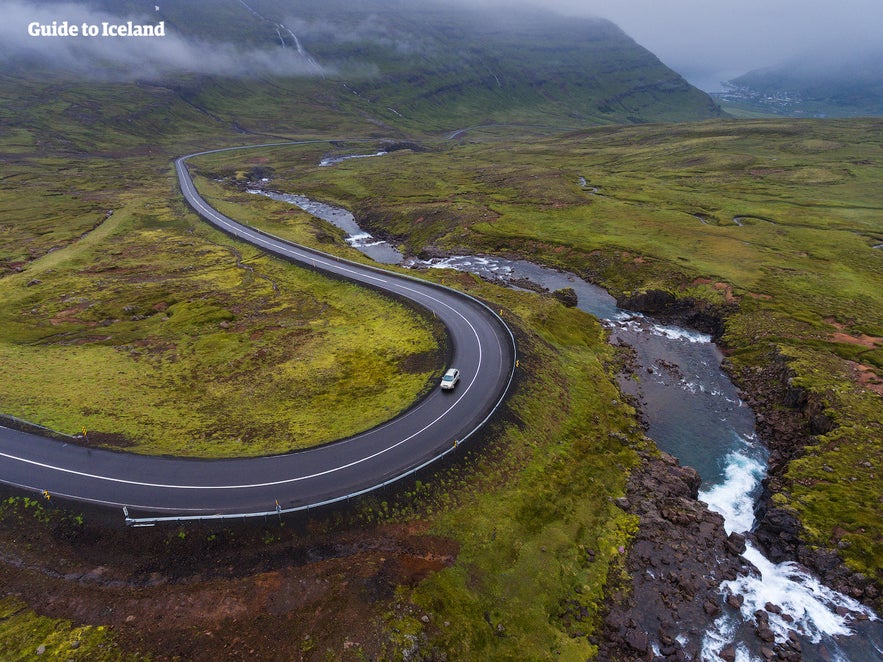 Highland roads in Iceland (also known as F roads) are generally closed during the spring months due to lingering snow and ice, making road conditions dangerous for drivers. These roads are typically only open during the summer months, from June to September, when the weather is more stable, and conditions are safer for drivers.
Highland roads in Iceland (also known as F roads) are generally closed during the spring months due to lingering snow and ice, making road conditions dangerous for drivers. These roads are typically only open during the summer months, from June to September, when the weather is more stable, and conditions are safer for drivers.
It's important to note that even some lower-altitude roads may still be closed or have restricted access during the spring months, especially in the early part of the season. Visitors should always check road conditions before setting out on any trips and pay attention to any road closures or warnings issued by Icelandic authorities.
If you plan to visit the highlands of Iceland during your trip, it's best to plan your visit for the summer months when the roads are open and conditions are generally more favorable for travel.
The Spring Weather in Iceland
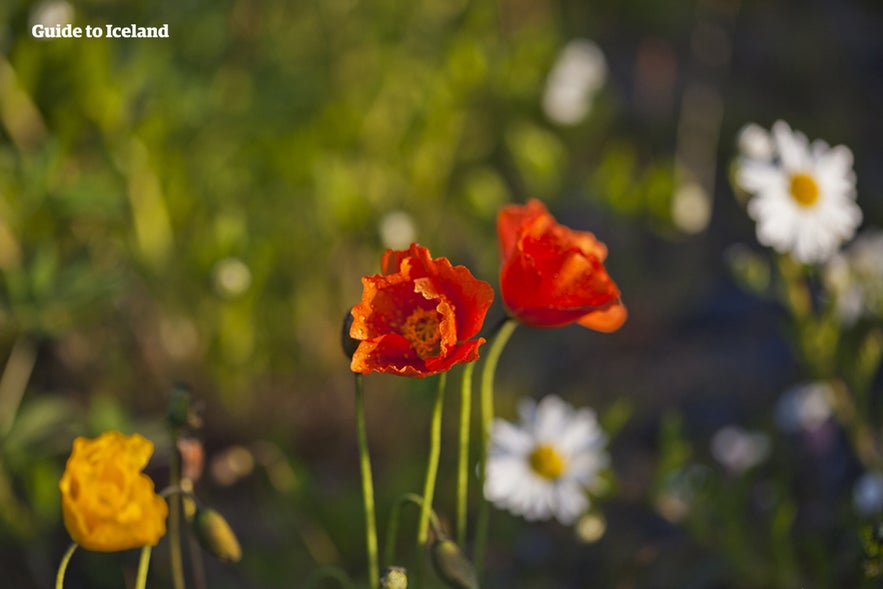 The weather in Iceland during spring can be quite variable, and visitors should come prepared for changing conditions. In general, spring in Iceland is characterized by milder temperatures, longer days, and more sunlight than during the winter months.
The weather in Iceland during spring can be quite variable, and visitors should come prepared for changing conditions. In general, spring in Iceland is characterized by milder temperatures, longer days, and more sunlight than during the winter months.
Visitors to Iceland in spring should pack warm and waterproof clothing, as well as sturdy hiking boots, a hat, gloves, and a scarf. It's also a good idea to dress in layers so that you can adjust your clothing according to the temperature and weather conditions.
While the weather in Iceland can be unpredictable at any time of the year, spring is generally a good time to visit, as the days are longer and the weather is milder than it is in the winter.
Average temperature in March
In March, the average temperature in Reykjavik is around 33°F (1°C), with highs reaching up to around 39°F (4°C).
Average temperature in April
April is slightly warmer, with average temperatures ranging from 36°F to 43°F (2°C to 6°C).
Average temperature in May
May is the mildest month of spring, with temperatures averaging around 45°F (7°C).
What to Pack for Spring in Iceland
 While spring in Iceland is generally milder than winter, visitors should still pack warm and waterproof clothing, as well as sturdy hiking boots, a hat, gloves, and a scarf. The weather can be unpredictable, with occasional snow and rain, especially in the early part of the season. Here are some essential items to pack for a trip to Iceland in spring:
While spring in Iceland is generally milder than winter, visitors should still pack warm and waterproof clothing, as well as sturdy hiking boots, a hat, gloves, and a scarf. The weather can be unpredictable, with occasional snow and rain, especially in the early part of the season. Here are some essential items to pack for a trip to Iceland in spring:
- Warm layers: Bring warm clothing that can be layered, including a waterproof and windproof jacket, a warm sweater or fleece, and a thermal base layer.
- Waterproof and sturdy shoes: Pack sturdy hiking boots or shoes that can handle uneven terrain and protect your feet from the elements.
- Accessories: Bring a warm hat, gloves, and scarf to protect your head, hands, and neck from the cold.
- Sunglasses: Bring sunglasses to protect your eyes from the bright sunlight, which can be intense in Iceland, especially during the spring.
- Camera equipment: Bring your camera and any necessary equipment to capture Iceland's stunning natural landscapes and wildlife.
- Swimwear: Pack swimwear if you plan to visit any geothermal pools or hot springs.
- Travel adapter: Bring a travel adapter if necessary to charge your electronics in Iceland.
Driving in Iceland During Spring
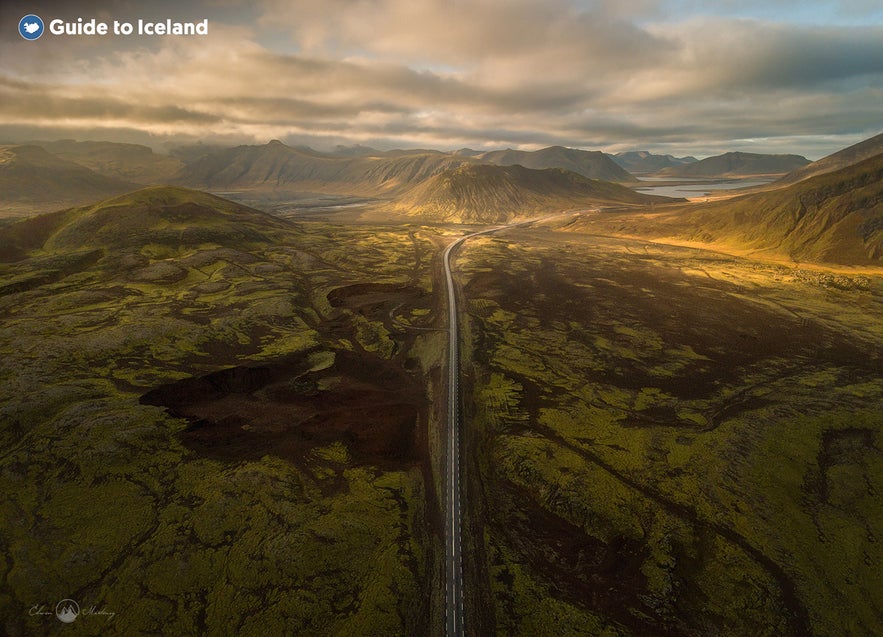 Driving in Iceland during spring may be challenging due to lingering snow and ice from the winter months, as well as unpredictable weather conditions that can impact road safety. Here are some tips for driving in Iceland during spring:
Driving in Iceland during spring may be challenging due to lingering snow and ice from the winter months, as well as unpredictable weather conditions that can impact road safety. Here are some tips for driving in Iceland during spring:
Check road conditions: Always check road conditions before setting out on any trips, and be prepared to adjust your plans if necessary. The Icelandic Road and Coastal Administration (IRCA) provides up-to-date information on road conditions across the country.
Rent a 4x4 vehicle: If you plan to travel on unpaved or gravel roads, it's recommended to rent a 4x4 vehicle with high clearance. These vehicles are better suited for the challenging terrain in Iceland and can provide greater safety and stability.
Drive with caution: Exercise caution when driving on gravel roads, especially during wet or icy conditions. Reduce your speed and keep a safe distance from other vehicles.
Watch for wildlife: Iceland is home to a variety of wildlife, including roaming sheep, reindeer, and Arctic foxes. Be alert for animals on or near the road, especially in rural areas.
Carry emergency supplies: Always carry emergency supplies in your vehicle, including warm clothing, food and water, and a first aid kit.
Pay attention to weather forecasts: Pay attention to weather forecasts and be prepared to adjust your plans based on changing weather conditions.
Drive during daylight hours: During the spring, the days are longer, and there is more daylight, making it easier to see and navigate the roads. Try to plan your driving for daylight hours whenever possible. Overall, these vacation packages in Iceland offer a great way to experience the country's natural beauty, wildlife, and culture, with a range of activities and options to suit all interests and budgets.
Spring Compared to Other Seasons in Iceland
If you're wondering how spring in Iceland compares to other seasons, we have compared them one by one to better understand visiting the country during different times of the year.
Spring vs. Summer
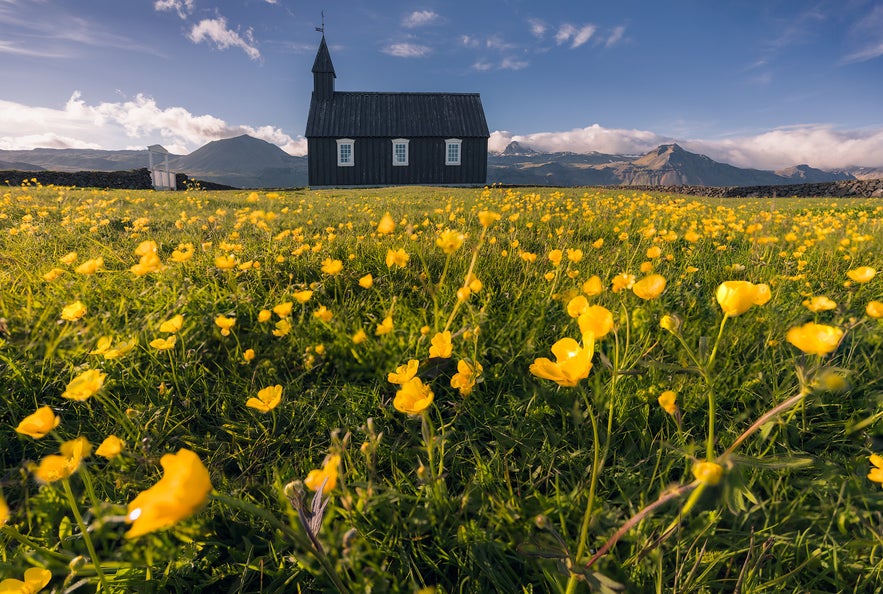 Spring and summer in Iceland are both beautiful times to visit, but there are some key differences between the two seasons.
Spring and summer in Iceland are both beautiful times to visit, but there are some key differences between the two seasons.
Spring, which runs from March to May, is a time of renewal in Iceland. The days start to get longer, the snow and ice begin to melt, and the countryside comes to life with vibrant green colors. Visitors to Iceland in spring can see an abundance of wildlife, including puffins, whales, and seals. There's even a possibility to witness the northern lights until around mid-April.
Summer, which runs from June to August, is more crowded than spring. The days are very long, with nearly 24 hours of daylight, making it an ideal time for outdoor activities such as hiking, camping, and sightseeing. The weather is generally warmer than spring, with temperatures ranging from 50°F to 68°F on good days (10°C to 20°C), and the countryside is bursting with wildflowers and lush greenery.
Ultimately, the best time to visit Iceland depends on your personal preferences and what you want to experience during your trip. If you prefer fewer crowds and a more peaceful atmosphere, spring may be the best choice for you. If you want to enjoy a wide range of outdoor activities and experience the midnight sun, then summer may be the best time to visit.
Spring vs. Winter
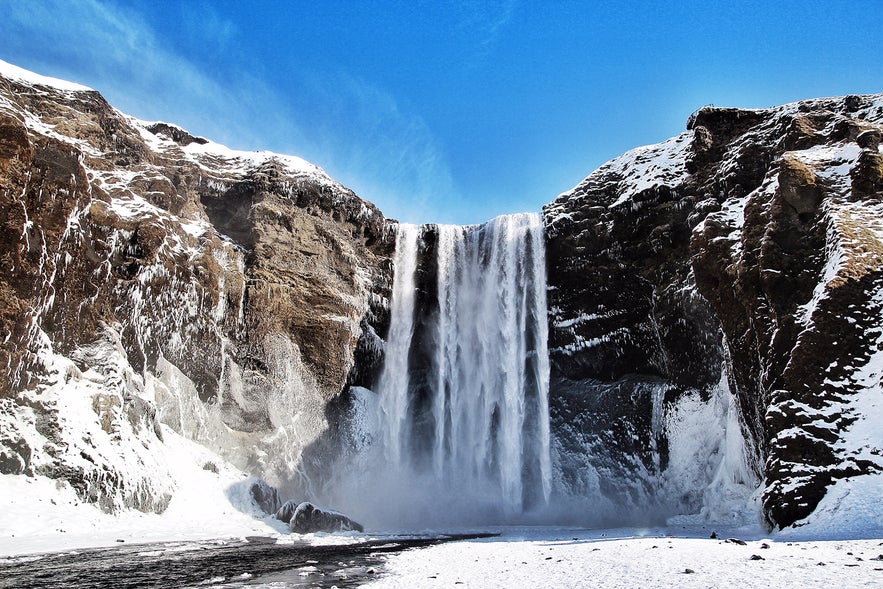 Winter, which runs from December to February, is a magical time in Iceland. The land can be covered in snow and ice, creating a beautiful winter wonderland.
Winter, which runs from December to February, is a magical time in Iceland. The land can be covered in snow and ice, creating a beautiful winter wonderland.
Visitors to Iceland in winter can witness the northern lights, go snowmobiling or dog sledding, and soak in geothermal hot springs. Ice cave tours, one of the most popular activities in Iceland, are mostly available during winter, with some options still available in spring. On the other hand, Jokulsarlon boat tours start operations in May.
However, the weather during winter can be extreme, with strong winds and temperatures often dropping below freezing, and the country experiences only a few hours of daylight each day.
Spring, on the other hand, is when the Icelandic countryside comes to life with vibrant green colors. During spring, many migrating animals, such as whales and birds, return to Iceland and give life to its nature.
The weather can still be cool and unpredictable, but it's generally milder than in winter, and visitors can enjoy a wider range of outdoor activities.
Ultimately, the best time to visit Iceland depends on what you want to experience during your trip. If you want to witness the northern lights and enjoy winter sports and activities, then winter may be the best time to visit. However, if you want to experience the country coming to life after the winter months, see wildlife, and enjoy a wider range of outdoor activities with smaller crowds, then spring may be the best time for your visit.
Spring vs. Autumn
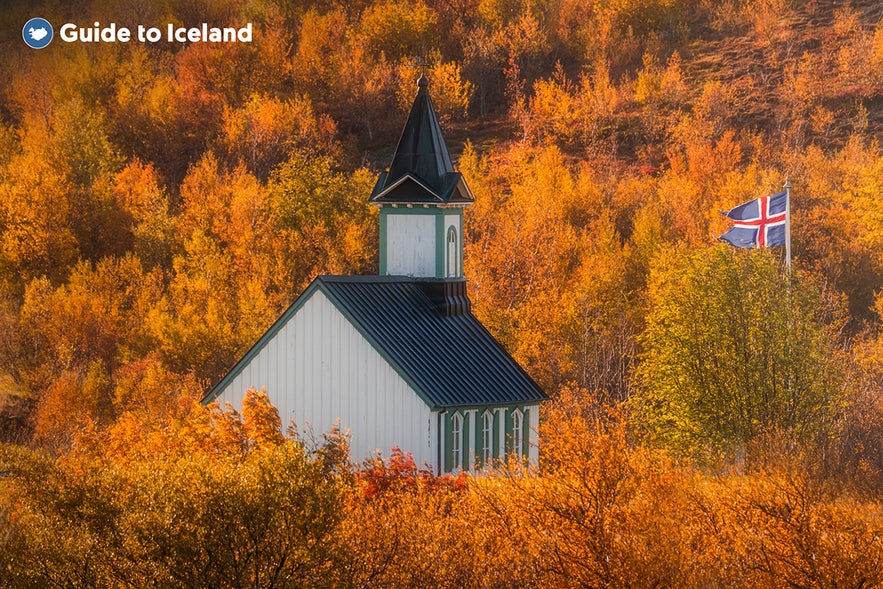 Autumn, which runs from September to November, is a time of change in Iceland. The country's landscapes are painted with vivid colors of red, yellow, and brown, making it a beautiful time for photography and sightseeing.
Autumn, which runs from September to November, is a time of change in Iceland. The country's landscapes are painted with vivid colors of red, yellow, and brown, making it a beautiful time for photography and sightseeing.
Visitors can enjoy hiking, fishing, and sightseeing, as well as cultural events like the Iceland Airwaves music festival. The weather in the fall is cool, with temperatures ranging from 41°F to 50°F (5°C to 10°C), similar to spring.
Spring, which runs from March to May, is also a time of change in Iceland, but in the opposite direction. The country comes to life after the winter months, with vibrant green colors and wildlife returning to the island. Visitors can see puffins, whales, and seals.
Ultimately, the best time to visit Iceland depends on your preferences and what you want to experience during your trip. If you're interested in autumnal landscapes and cultural events, then fall may be the best time to visit. If you want to see wildlife and witness the land coming to life after winter, then spring may be the best time to visit.
FAQs About Spring in Iceland
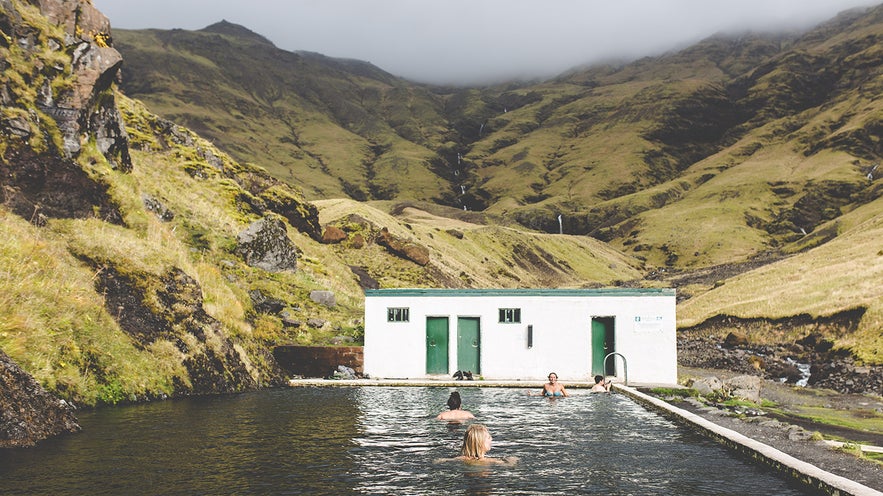 These are the most frequently asked questions about Iceland in spring:
These are the most frequently asked questions about Iceland in spring:
What is the weather like in Iceland during spring?
The weather in Iceland in spring can be quite mild, with temperatures ranging from 32°F to 50°F ( 0°C to 10°C). However, it can still be unpredictable, with occasional snow and rain, so it's best to come prepared with warm clothing.
Is Iceland too cold in April?
Iceland can still be quite cold in April, but it's not as cold as it is during the winter months. The average temperature in Reykjavik in April is around 39°F (4°C), but it can vary depending on the day and the location in the country.
Visitors to Iceland in April should pack warm and waterproof clothing, as well as sturdy hiking boots, a hat, gloves, and a scarf. It's also a good idea to dress in layers so that you can adjust your clothing according to the temperature and weather conditions.
While the weather in Iceland can be unpredictable at any time of the year, April is generally a good time to visit, as the days are longer and the weather is milder than it is in the winter.
Is Iceland still cold in May?
Iceland can still be cool in May, but it's generally a little warmer than it is in April. The average temperature in Reykjavik in May is around 45°F (7°C), but temperatures can vary depending on the location in the country.
Visitors to Iceland in May should still pack warm and waterproof clothing, as well as sturdy hiking boots, a hat, gloves, and a scarf. It's also a good idea to dress in layers so that you can adjust your clothing according to the temperature and weather conditions.
May is a good time to visit Iceland, as the days are long, with around 18-19 hours of daylight, making it a great time to explore the country's stunning natural landscapes.
Can I go ice-caving in Iceland during spring?
Yes, you can go ice-caving in Iceland during spring, but the conditions and availability of ice caves can vary depending on the specific location and time of year. However, during March and April, most natural ice caves are still open for guided tours. This unique ice cave tour in Vatnajokull glacier is one of the most popular option, and this Katla ice cave tour is available year-round as well.
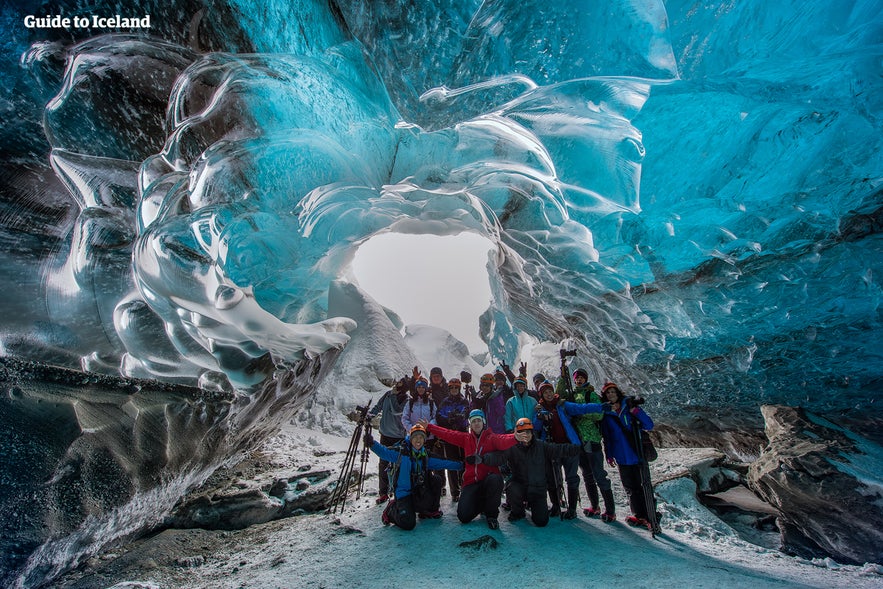
Can I see the northern lights in Iceland in spring?
Yes, you can still see the northern lights in Iceland during the beginning of spring, although the best time to see them is from September to mid-April when the sky is consistently dark.
What wildlife can you see in Iceland in spring?
In spring, visitors to Iceland can see migrational birds return to the country for breeding and nesting. These include the adorable puffins, Arctic terns, golden plovers, oystercatchers, and snipes. In the ocean, you will be able to spot seals and various species of whales.
Is it crowded in Iceland in spring?
Iceland is generally less crowded in spring than in summer, which makes it a good time to visit if you want to avoid crowds at popular destinations.
Are the roads open in Iceland in spring?
Yes, the main roads are open year-round, although some secondary roads may still be closed due to snow and ice, especially in the hard-to-reach Highlands of Iceland.
Can you go to the Highlands in Iceland during spring?
While it's possible to go to the highlands in Iceland in spring, many of the highland roads don't open until June, so it's important to check road conditions before planning a trip.
What are the average daylight hours in Iceland during spring?
In March, the daylight hours in Iceland are around 12 hours per day, and by May, they are around 18-19 hours per day. This means that visitors have plenty of daylight to explore and enjoy the country's stunning natural landscapes.
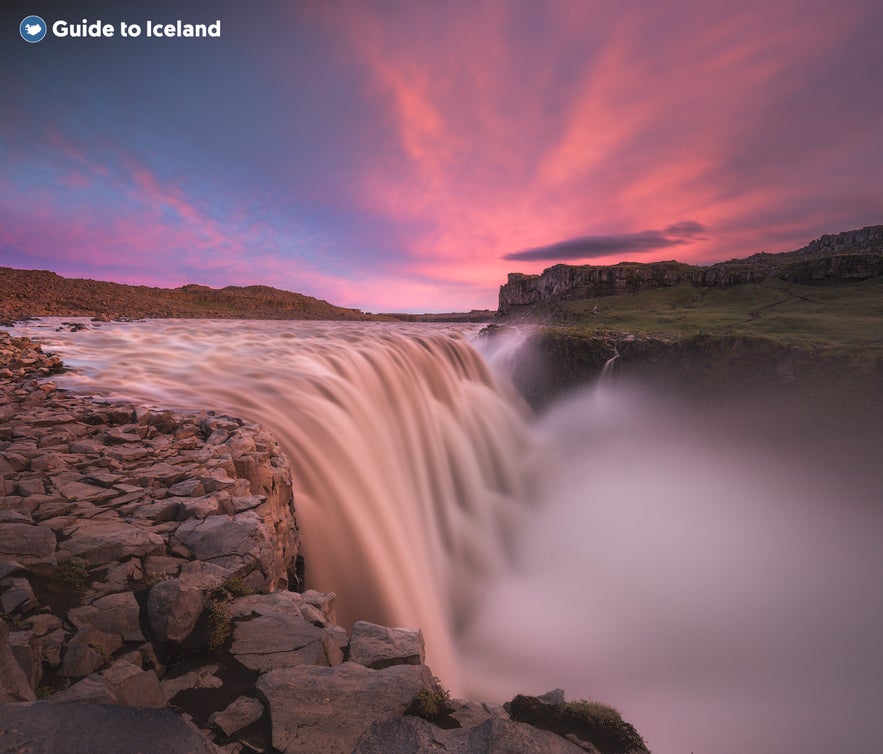
Are there any festivals or events in Iceland in spring?
Yes, there are several festivals and events in Iceland in spring, including the Reykjavik Folk Festival, which takes place in early April, and the First Day of Summer celebration, which is a public holiday in Iceland that falls on the first Thursday after April 18th.
What is the best way to travel around Iceland in spring?
The best way to travel around Iceland in spring is by car, as this gives visitors the flexibility to explore the country's many sights and attractions at their own pace. You can easily pick up your rental car at Keflavik Airport, and have it with you from the start of your journey in Iceland. It's important to note that road conditions can be challenging in some parts of the country, so it's essential to have a reliable vehicle and to check road conditions before setting out.
What should I pack for a trip to Iceland in spring?
Visitors to Iceland in spring should pack warm and waterproof clothing, as well as sturdy hiking boots, a hat, gloves, and a scarf. It's also a good idea to bring a swimsuit for a dip in one of Iceland's many hot springs or geothermal pools. If you prefer to pack light, you can go shopping for warm clothes at the many boutique stores located on Laugavegur street in downtown Reykjavik.
Are there any safety concerns for visitors to Iceland in spring?
Visitors to Iceland in spring should be aware that weather conditions can be unpredictable, and sudden changes in weather can occur. It's essential to check weather and road conditions before setting out on any trips. Make sure that you have the necessary gear and clothing to stay warm and dry in case of inclement weather.
Summary of Iceland in Spring
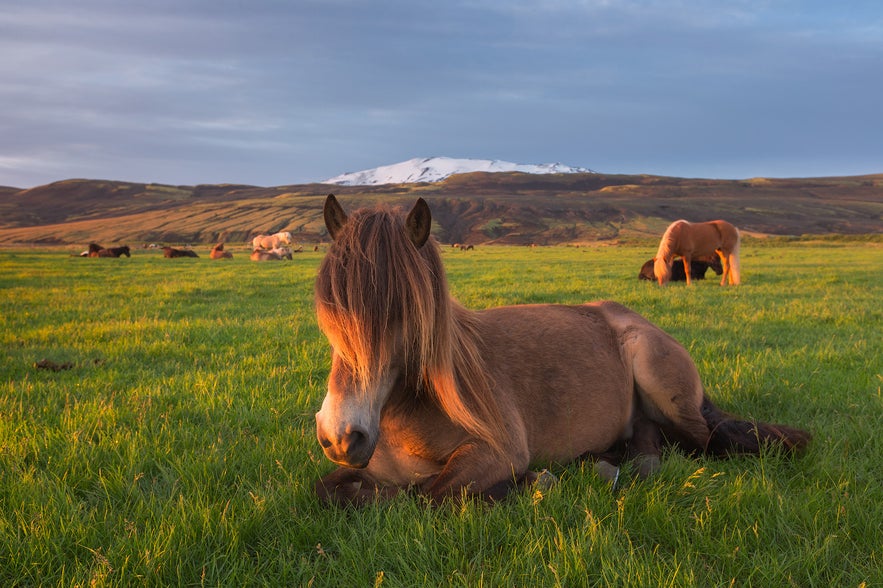 In conclusion, visiting Iceland in spring is a truly magical experience, offering visitors the chance to witness the country's natural beauty and unique culture as it awakens from the long and dark winter months. From the arrival of migratory birds and blooming lupins to the power of Iceland's waterfalls and the chance to see the elusive northern lights, spring in Iceland has something for everyone.
In conclusion, visiting Iceland in spring is a truly magical experience, offering visitors the chance to witness the country's natural beauty and unique culture as it awakens from the long and dark winter months. From the arrival of migratory birds and blooming lupins to the power of Iceland's waterfalls and the chance to see the elusive northern lights, spring in Iceland has something for everyone.
Whether you choose to explore Iceland's stunning landscapes, relax in geothermal pools, attend cultural events, or simply take in the country's natural wonders, Iceland in spring has it all. With fewer crowds and the promise of longer days, visitors can immerse themselves in all that Iceland has to offer during this enchanting season.
So pack your bags and prepare to embark on a journey to one of the world's unique and beautiful destinations, Iceland, in spring awaits!
Are you planning to visit Iceland next spring? What are you most looking forward to? If you have visited Iceland during spring, please tell us your experience in the comments below.


